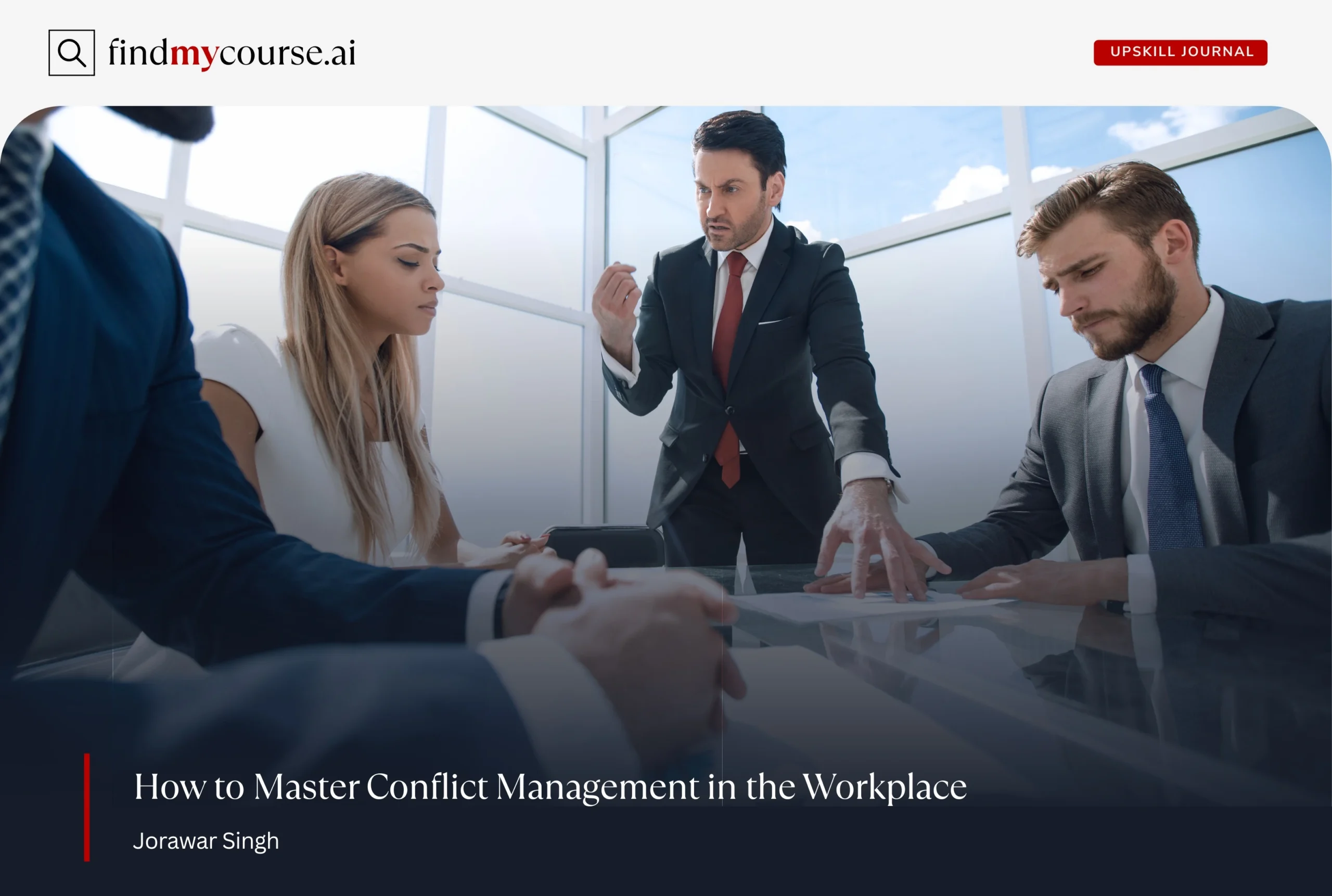Conflict is a natural part of any workplace. When people with different goals, opinions, or work styles come together, disagreements are bound to happen. But conflict doesn’t have to be destructive. In fact, if managed properly, it can lead to better understanding, stronger collaboration, and smarter solutions. Conflict management is the process of recognizing and resolving disagreements in a constructive way. Whether you’re leading a team or working within one, learning how to handle conflict calmly and effectively is a key skill in today’s work environment.
Why Conflict Management Is Essential
Effective conflict management is a cornerstone of a healthy and high-performing workplace. It’s not just about resolving disputes—it’s about creating an environment where communication thrives, collaboration deepens, and problems are addressed before they grow. Every organization—regardless of size or industry—faces conflict at some point. Ignoring it doesn’t make it go away. In many cases, it only grows worse.
Strong conflict management helps you:
• Prevent small issues from escalating
• Maintain team morale and trust
• Improve communication and collaboration
• Make better, faster decisions
On the other hand, unresolved conflict can lead to stress, reduced productivity, strained relationships, and even employee turnover. When teams know how to manage tension constructively, they’re more resilient, engaged, and successful.
Common Sources of Workplace Conflict
Before diving into solutions, it’s important to understand where conflict often begins. Common causes include:
- Miscommunication: Messages are unclear or misunderstood
- Conflicting priorities: Team members or departments have competing goals
- Unclear roles: Confusion about who is responsible for what
- Limited resources: Time, money, or staff shortages
- Personality clashes: Differences in work styles or values
By recognizing these triggers early, you can choose the right way to address them.
Conflict Management Techniques
Techniques are hands-on tools that help you manage conflict in real time. They help you stay grounded, communicate better, and respond thoughtfully—even when things get tense.
1. Active Listening
One of the most effective conflict resolution techniques is also the simplest: just listen. But not passively—listen with intention. When people feel genuinely heard, they are more likely to stay calm, open to solutions, and less likely to become defensive. Here’s how to practice active listening:
- Put away distractions and give your full attention
- Let the other person speak without interruption
- Summarize what they’ve said: “So what I’m hearing is…”
- Ask clarifying questions to better understand their point
2. Clear, Respectful Communication
Clear communication helps prevent misunderstandings and reduces emotional tension. It keeps the conversation focused on the issue—not personal attacks—making it easier to find common ground. To communicate respectfully:
- Use “I” statements (e.g., “I felt left out” instead of “You ignored me”)
- Avoid blaming or overly emotional language
- Stick to specific events or actions—not generalizations
- Keep the tone calm and solution-focused
3. Identifying the Real Problem
Often, the visible conflict isn’t the real problem. Digging deeper helps uncover underlying frustrations or unmet expectations that may be fueling the disagreement. Addressing those root causes leads to longer-lasting, more meaningful resolution. To uncover the real issue:
- Ask, “What’s really bothering me or them?”
- Look for patterns from past interactions
- Reflect on whether this issue is linked to a bigger concern
- Discuss expectations clearly to reset understanding
4. Managing Emotions
Strong emotions can cloud judgment and escalate conflict. Recognizing and managing emotions—both yours and others’—helps keep the discussion respectful and productive. Emotional control builds credibility and fosters trust. To manage emotions during conflict:
- Pause and take a breath before responding
- Acknowledge your feelings calmly (“I’m frustrated but open to discussion”)
- Try to understand how the other person may be feeling
- Take a short break if tensions run high and revisit the conversation later
Conflict Management Strategies
While techniques help in the moment, strategies are your bigger-picture approaches to resolving disagreements. The right strategy depends on the situation—and sometimes, combining them works best. These approaches are grounded in the Thomas-Kilmann Conflict Model, which outlines five key strategies for handling conflict.
1. Avoiding (Letting It Go)
Sometimes, the best way to manage conflict is to step back—at least for the moment. Avoiding gives people space to cool down or reflect before a more productive conversation can happen. This approach works best for minor issues or when immediate discussion would only escalate tension. Use this strategy when:
- The issue is trivial or not worth the stress
- You need time to gather more facts
- Emotions are too high for a calm discussion
2. Accommodating (Yielding for Harmony)
Accommodating involves putting someone else’s needs ahead of your own for the sake of maintaining peace. It can be a kind, strategic move when the issue is small, or when preserving the relationship is more important than being right. This approach helps de-escalate tension and shows flexibility. Use this strategy when:
- The outcome doesn’t matter much to you
- You want to maintain goodwill or build trust
- The other person needs a small win
3. Competing (Taking a Firm Stand)
Competing means standing your ground and asserting your position, even if it creates tension. It’s useful in situations where rules, safety, or ethics are at stake. While not always comfortable, this strategy shows leadership and protects what’s non-negotiable. Use this strategy when:
- You must enforce policies or boundaries
- The issue is urgent and requires a firm decision
- The stakes are too high to compromise
4. Compromising (Meeting Halfway)
This approach seeks a middle ground where both sides give a little to gain a resolution. While it may not fully satisfy either party, compromising is often quick and practical—especially when time is limited or when both sides share equal power. Use this strategy when:
- You need a fast, workable solution
- Neither party is willing to yield entirely
- A temporary agreement is acceptable
5. Collaborating (Creating a Win-Win)
Collaboration is the most constructive and long-term conflict resolution strategy. It focuses on meeting the needs of all parties involved through open discussion and mutual problem-solving. Though it takes more time and effort, this approach builds trust and often leads to innovative solutions. Use this strategy when:
- The issue is complex and important to everyone involved
- There’s a foundation of respect and willingness to talk
- You want to strengthen relationships while solving the problem
Courses to Hone This Skill
If you want to improve your conflict management abilities further, consider taking structured courses that dive deeper into these strategies and offer practical tools:
- Conflict Management Specialization (Coursera – University of California, Irvine)
This specialization explores practical conflict resolution techniques and negotiation skills you can apply in both professional and personal settings. - Conflict Management and Mediation (edX – Université catholique de Louvain)
This course delves into mediation practices and how to handle disputes constructively within diverse and multicultural environments.
Managing Conflict in Remote or Hybrid Workplaces
As more teams operate remotely or in hybrid setups, managing conflict requires a slightly different approach. Without face-to-face cues, misunderstandings can escalate quickly—and silence can feel like avoidance rather than space. To keep communication clear and respectful across distance:
- Use video for sensitive conversations – Seeing expressions and tone helps maintain empathy.
- Be intentional in writing – Choose words carefully and avoid abrupt or vague messages.
- Address issues early – Waiting too long can cause minor friction to snowball.
- Document outcomes – Shared notes or summaries help avoid confusion later.
Even in digital spaces, the core principles of conflict management still apply—listen actively, stay respectful, and aim for resolution, not blame. The key is being proactive and human, no matter where you’re working from.
Common Mistakes to Avoid in Conflict Management
Even well-meaning leaders can mishandle conflict in ways that escalate tension. Here are four common pitfalls to watch out for:
- Ignoring the problem – Letting issues fester often leads to bigger blowups later.
- Taking it personally – Most workplace conflicts are about processes or expectations, not character.
- Reacting emotionally – Responding in anger or frustration can damage trust. Pause and choose a thoughtful response.
- Involving others too soon – Escalating to HR or peers prematurely can create sides. Address the issue directly first.
Avoiding these mistakes helps keep conflict productive and relationships intact.
Final Thoughts
Conflict will always have a place at the table—but with the right approach, it doesn’t have to take over the room. Managing it with empathy, structure, and self-awareness isn’t just a professional skill—it’s a leadership standard.
So whether you’re stepping into a tough conversation or guiding your team through tension, approach it with these conflict management tools are in your hands.
And when you need a steady, smart second voice—our AI assistant is right here with you.


